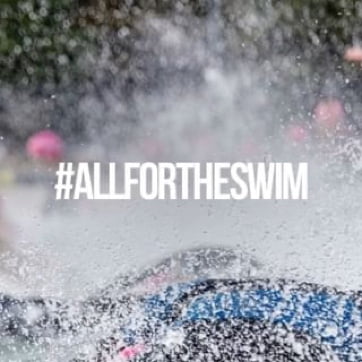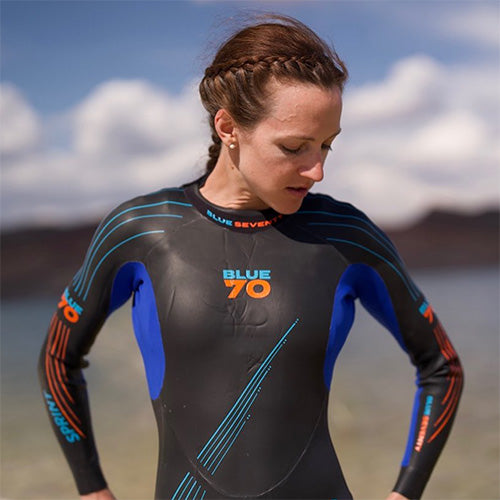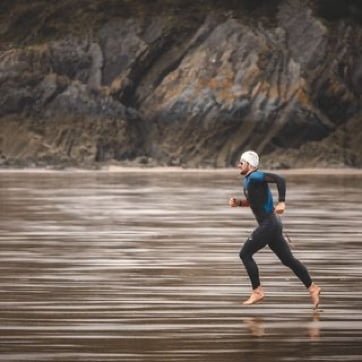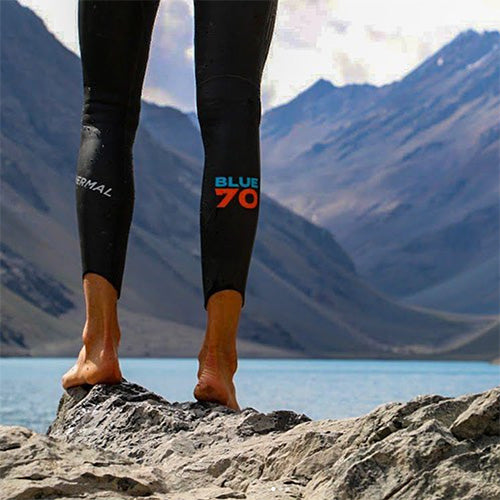How to Choose? Reaction vs Helix
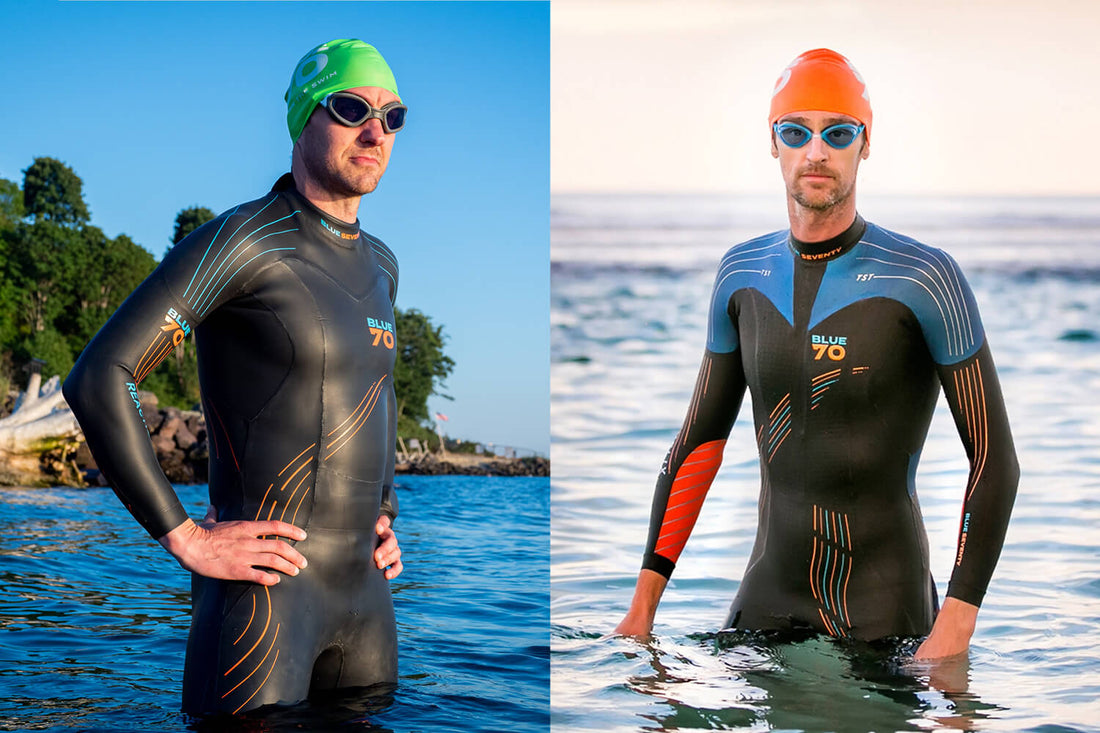
More Alike than Different
The Reaction and the Helix wetsuits are more similar than they are different. Many people, erroneously, believe the Helix is a far superior suit. While it’s true the Helix is the better suit for some people; for others the Reaction is the better choice. When deciding between these two models, the important question is not, "which is the better wetsuit?", but rather, "which is best wetsuit for me?"
Similar to the differences between the Fusion and Reaction wetsuits, your swim mechanics, body rotation and overall form will come into play in feeling a difference between the Helix and Reaction wetsuits. You also cannot know how a wetsuit truly "feels" without swimming in it, which is why it is important to swim in your suit when evaluating the fit and feel, and why we encourage all customers to take a test swim in their new wetsuit.
LEARN MORE HERE: TAKE A TEST SWIM IN YOUR WETSUIT
Don't forget that getting the wetsuit on correctly makes a huge difference in the feel and flexibility for both the Fusion and Reaction. Make sure you've put your suit on well and made adjustments before evaluating the fit or going for a swim.
GET INTO A WETSUIT SUCCESSFULLY: WATCH OUR FIT VIDEOS
Let’s review the ways in which the Helix and Reaction wetsuits are alike before getting into the differences.
Similarities:
- Shoulder Mobility
- Hip Drive Design
- Flexible Lat Panels
- Quick Exit Leg Panels
- Side Flex Panels
Shoulder Mobility
Both the Reaction and the Helix provide incredible range of motion though highly flexible neoprene and design. The latest “seamless shoulder” design in the Reaction significantly increased the overall flexibility, making it directly comparable to the current Helix which uses a higher grade, 40 cell, neoprene for maximum flexibility. Better shoulder mobility allows for both a higher stroke rate and more distance per stroke, which aids in a faster swim.
Hip Drive Design
Designed to increase your natural rotation, the patterning on both the Helix and Reaction was improved during our last design update to remove the buoyant 5mm neoprene around the front hip bone. Replacing that area with a less buoyant 3mm neoprene allows your efforts for more efficient stroke mechanics to be more effective. By not having to fight the extra buoyancy of the 5mm neoprene, a swimmer’s hip rotation is accentuated which results in more speed with less effort. More hip rotation allows for longer reach, which in turn increases your distance per stroke resulting in more speed.
It is important to point out that we’ve specified that it accents or increases the rotation that a swimmer is already creating. There are many swimmers who do not focus on stroke mechanics and do not rotate their body as they swim. These swimmers would not benefit from the advancements in either the Helix or Reaction, and we often recommend the Fusion wetsuit as the added buoyancy throughout the hip region will aid in lifting the hips to improve efficiency when swimming “flat”.
Compare the Reaction & Fusion wetsuits.

Flexible Lat Panels
The similarities continue along the back of each wetsuit. Like the updated shoulder design in the Reaction, we determined that designing the panels on the back of the suit as a larger single piece without seams would produce maximum stretch across the lats which will allow for a higher stroke rate with less fatigue. To further maximize this, we took the suit down to the materials and ensured both the Reaction and Helix use the most flexible jersey lining to ensure the most flexibility. Furthermore, we use a thinner neoprene in these panels (2mm in the Reaction and 1.5mm in the Helix) for increased stretch.
Quick Exit Legs and Side Flex Panels
Other similarities between the two wetsuits occur in the small details we build into both wetsuits for added ease of use and fit. Both the Helix and Reaction feature quick exit leg panels making it easier to slide your feet in and out of the suit. They also both feature our Side Flex Panels, which are panels of thinner neoprene running down the side of the lower body. These panels allow more stretch when getting into the suit, and produce a better fit across more body shapes, especially for swimmers with larger thighs and wider hips.
Differences Between the Helix and Reaction
As we reviewed above, these two wetsuits are very similar in their overall performance, with all but the most efficient and fast swimmers likely unable to tell a difference between the two when swimming. Many of the differences between the suit are minor but can be important when deciding whether the Helix or the Reaction is the right wetsuit for you.
- Neoprene Grade
- Lift Panels and Aerodome
- Zipper
Different Grade and Thicknesses of Neoprene
Smoothskin neoprene comes in various grades, each of which offers more flexibility than the level below it. Yamamoto limestone neoprene, which is used in all of our wetsuits, grades their neoprene as 40 cell, 39 cell, 38 cell, etc with the lower number having less stretch. The thickness of the neoprene also plays a part. Thicker neoprene will be more buoyant and more durable than thinner neoprene, however it will also be less flexible. In order to create a very fast swimming wetsuit, using thinner more flexible neoprene in key mobility areas, such as the upper body, is very important. The Helix uses the most flexible, 40 cell, neoprene at 1.5mm thick, throughout the arms, shoulders, underarms, and back / lat panels. The Reaction uses 39 cell neoprene throughout the entire suit, with thickness in the arms, shoulders and under arms at 1.5mm and the back / lat panels at 2mm.
40 cell neoprene is more flexible than 39 because it has more air blown into the rubber. This also makes it more fragile than 39 cell. In addition, the thinner the neoprene is, the more susceptible it will be to tears and damage. So, depending on their needs, a swimmer might view the construction of the Helix, with the higher performance materials a benefit or a negative due to the sacrifice of durability as compared to the Reaction. If speed is your ultimate goal, choose the Helix, but know that it can tear or wear out more quickly with repeated use. Many professional triathlete’s use a Helix or Reaction for training and have a separate Helix they keep only for racing. If you swim frequently in only one wetsuit or are not a fast swimmer (under 1:30 / 100m) the Reaction may be a better overall choice. If you are not racing, but only open water swimming, the Reaction is the best choice for overall durability without sacrificing comfort and performance.

Wider Neck
The Reaction wetsuit features a new neck design intended to reduce the pressure many swimmers feel when wearing a wetsuit. Often this pressure is felt at the sides of the neck, so we redesigned the Reaction’s collar to taper at the sides, creating a wider opening at the top of the collar while maintaining the same width at the base in order to maintain a good seal to limit water entry. Overall, this new neck design has felt more comfortable to many folks. While it is not currently in our Helix, it will be in the next Helix release in 2024.
Additional Features
The Helix has two additional features that the Reaction does not. First, it uses an even more buoyant neoprene throughout the central core and upper legs. This is Aerodome from Yamamoto. They add large air bubbles between two layers of thinner neoprene to create a 5mm neoprene that has more buoyancy than traditional, single layer 5mm neoprene. This added buoyancy is a benefit for speed in the water, however it also means that those areas of the suit are going to be more susceptible to damage than the Reaction which has tradition 5mm smoothskin neoprene in those areas. So, once again, choose the Helix if speed is your ultimate goal. Another feature in the Helix that adds buoyancy, is our Layered Insulated Foam Technology Panels. Foam is more buoyant than neoprene and these “LIFT” panels sandwich a thin layer of foam between two layers of neoprene to add extra buoyancy in the legs where swimmers often tend to sink some. (note: the total thickness of all materials remains at 5mm to comply with all racing regulations). More buoyancy equals better positioning in the water, which equals more speed.
Quick Exit Zipper
The final difference between the Reaction and the Helix is the zipper. The Reaction features a traditional wetsuit zipper that zips up from the bottom of your back and secures at the base of your neck. It is very easy to zip up as the zipper is always attached, however having the zipper head at the neck can lead to chafing in some people. The Helix features a unique reverse zipper. Like a coat (in reverse), the two sides of the zipper fully detach at the base of the neck. The swimmer connects the zipper and zips down to close the wetsuit. This puts the bulky zipper head in the small of your back and allows the neck area of the wetsuit to be slimmer to reduce chafing. In addition, it is impossible for another athlete to accidentally pull your zipper down during a chaotic race swim and it is very quick and easy to unzip as you head to T1.
Summary
Overall, both the Helix and Reaction wetsuits are top of the line, performance products. If you are racing in your wetsuit and speed is your ultimate goal the Helix may be the best choice for you. If you are racing and training frequently in your wetsuit, we highly recommend a Helix for racing, and a second wetsuit (a Reaction is great) for training so that you extend the life of the racing gear. If you are looking for one wetsuit for both racing and training, we would recommend the Reaction as you will benefit from all the similarities of that suit compared to the Helix, but gain the added durability of the Reaction 39 cell neoprene. Lastly, if you are a swimmer looking for a higher end suit, but are not focused on efficient swim mechanics, you may not tell the difference between the two suits, and the Reaction may be a perfect choice. Now that you’re armed with all the details, you can make a better decision about which wetsuit will most benefit your goals and purchase the one that is right for you.

SHOP THE REACTION WETSUIT
The Reaction is the perfect choice for a faster swimmer who is looking for one wetsuit for both training and racing, or who swims frequently and wants to gain more durability or easy of zipping up solo, without sacrificing performance.
SHOP THE HELIX WETSUIT
The Helix is our top of the line, professional model. This wetsuit is designed for racing and will offer the ultimate speed and performance, but at a small sacrifice for durability. Choose this wetsuit if the most important thing you desire from your suit is speed.


